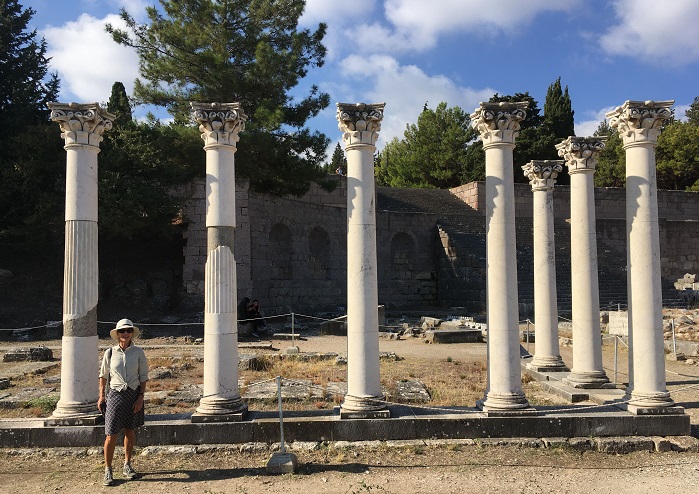
The ancient healing Sanctuary of Asklepios on the Greek island of Kos is an oasis of beauty and tranquility.
NOTE: Since our recent trip to Greece to research more settings for my novel-in-progress, THE ARIADNE DISCONNECT, Thor and I knew we had to return to this magical region. My first entry in this new blog series posted here on Saturday, 10/20/2018. It gives an overview of our rambles from Athens to seven islands in the Dodecanese and Cyclades groups, ending our ferry-hopping pilgrimage on the anciently sacred island of Delos.
“There are places benign and places baleful; and I seem to remember that in the treatise on Soils, Airs, Waters attributed to Hippocrates himself, the doctor-saint of Kos makes some attempt to describe the often fortuitous combination of the three elements necessary to create a site with natural healing properties.” (Lawrence Durrel, The Greek Islands) The Sanctuary of Asklepios on Kos certainly fulfills these requirements. Like the equally renowned ancient sanctuary of Epidauros in the Pelopponese, this site of healing exudes a nurturing sense of tranquility that welcomed Thor and me as we stepped into its morning quiet.
Asklepios, son of Apollo and the mortal Koronis, was worshipped as a healer-god from at least the 6th century BC. His staff, the caduceus, wrapped by either one or two sacred serpents, became a symbol of healing still used today in the medical professions.
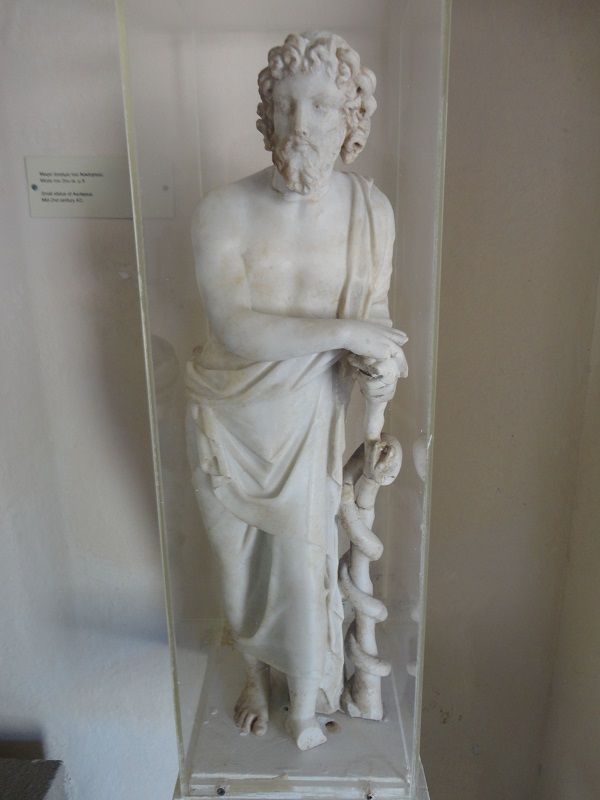
I had visited the luminous site of Epidauros many years ago, and was eager to see if the Kos Asklepios would engender a similar sense of healing serenity, and I’m happy to say that it did. I also needed to experience this site as a setting in my novel-in-progress. Thor and I arrived when the site first opened on a lovely October morning, when there were only a few other people there, and everyone seemed to respect the quiet beauty of this place perched in the pine-forested hills with a view over the sea to the nearby coast of Turkey.
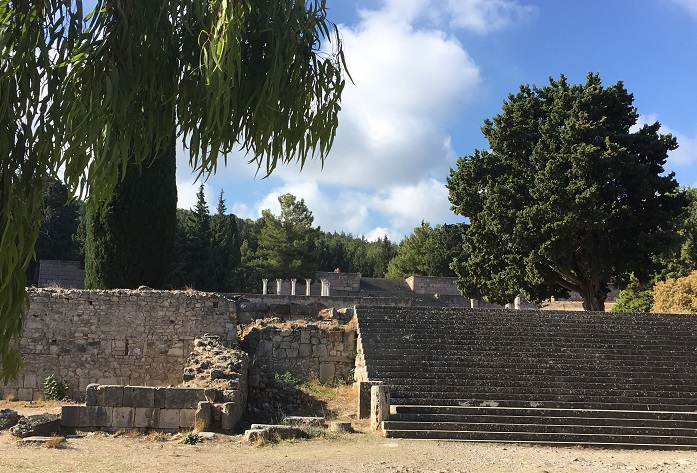
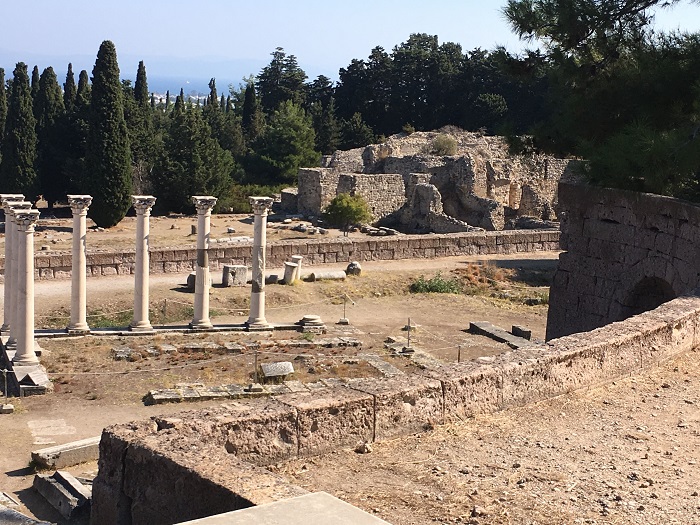
The sanctuary was first established around the late 5th century BC, although worship at the site dates from Mycenaean times (around 1550 BC). It climbs the hillside in three terraces. The photo above, taken from the highest terrace, shows the Corinthian columns of a later Roman temple from the 2nd/3rd century AD. On the lower terrace, to the right, are the remains of the stoa and sleeping quarters for the pilgrims who sought healing. The healings involved incubation: The ill would sleep overnight while visited by sacred serpents who would lick or touch them to induce dreams that would generate insight for the necessary cures. Years ago, when walking through a meadow on one side of the Epidauros Asklepion, I met some of the local serpents, but kept a respectful distance….
Here’s the layout of the Kos site:
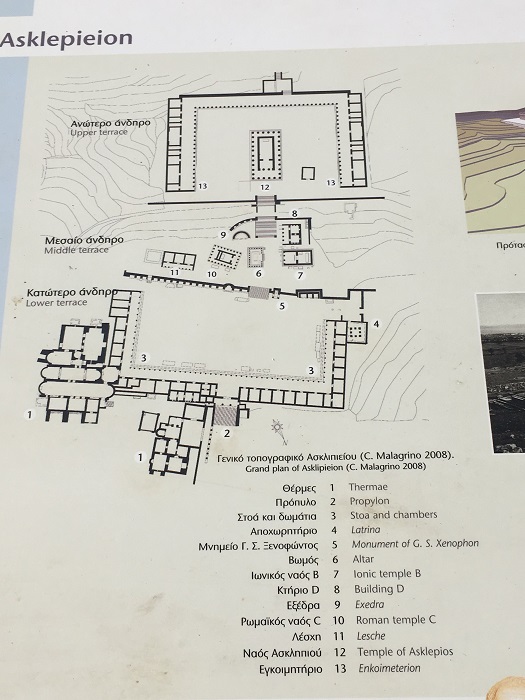
The upper terrace held the Temple of Asklepios (with different buildings from different periods). The middle terrace, supported by an impressive wall of arches, held the later Roman temple and the Altar of Asklepios where offerings to the god were burned.
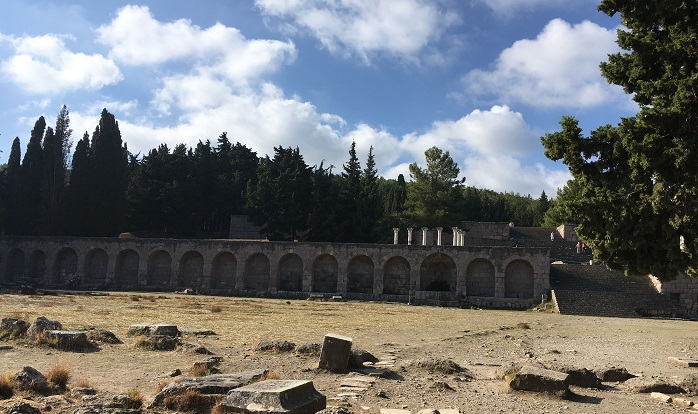
The Altar of Asklepios from the 3rd century BC:

One of Hippocrates’s important elements, a mineral spring, was channeled through this outlet in the archway wall. The moisture still supports lush moss and ferns.
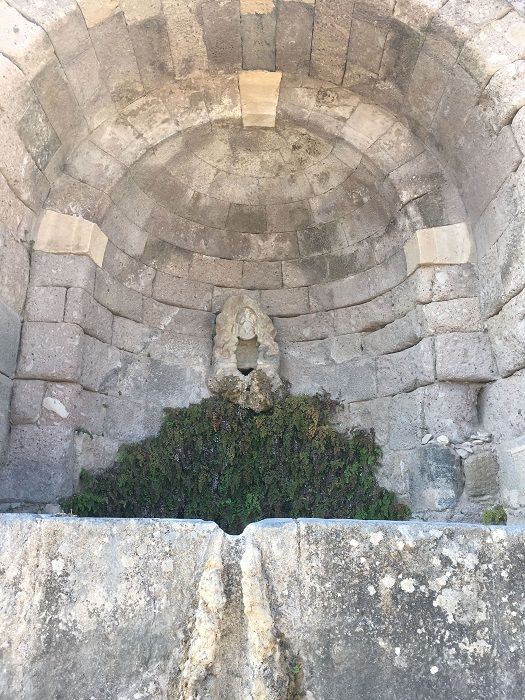
A goat-footed satyr playing pan-pipes presides over the spring outlet:
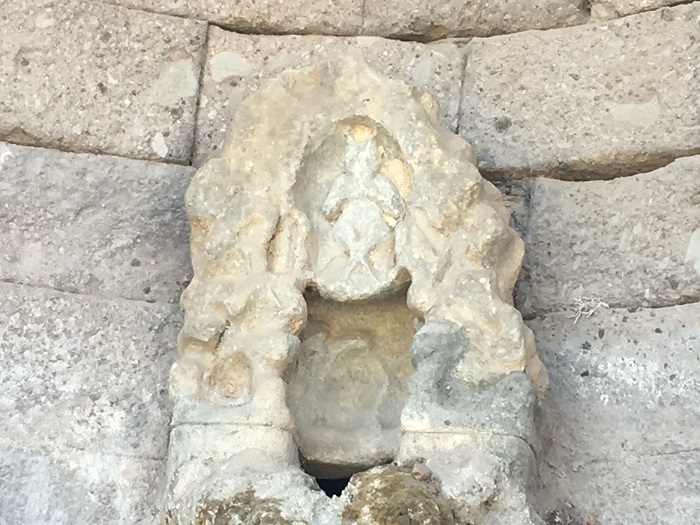
Some damaged statues, all that remain here of a reported wealth of statuary and votive offerings, lean against the arched wall. Beautiful detail of the woman’s dress made me wish it could have been restored.
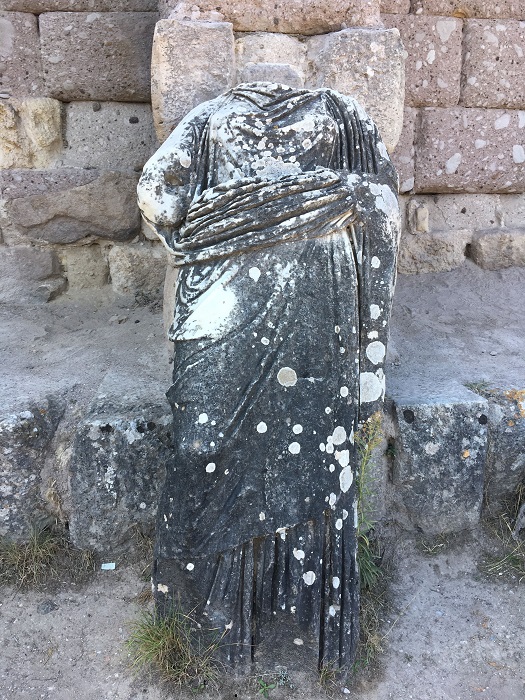
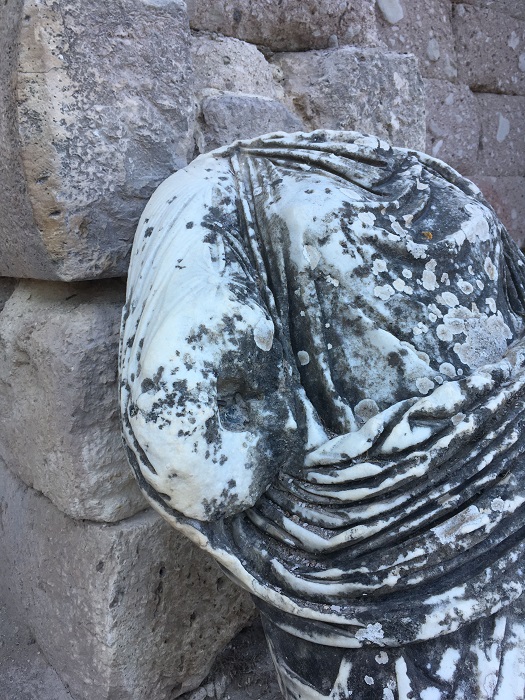
There isn’t much left of the Temple of Asklepios on the upper terrace:
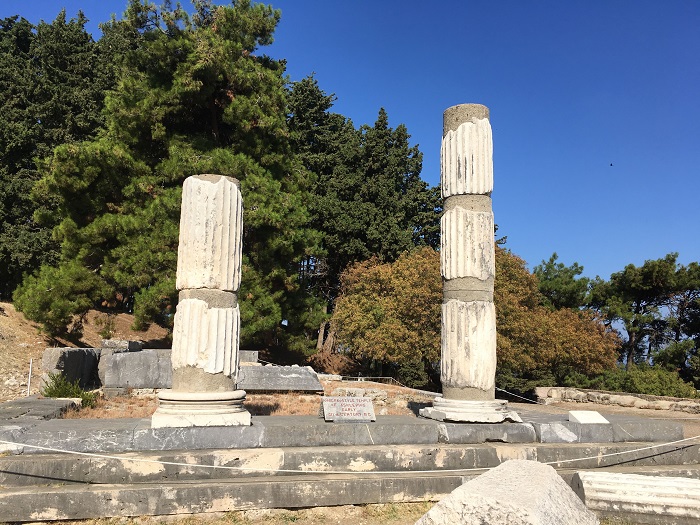
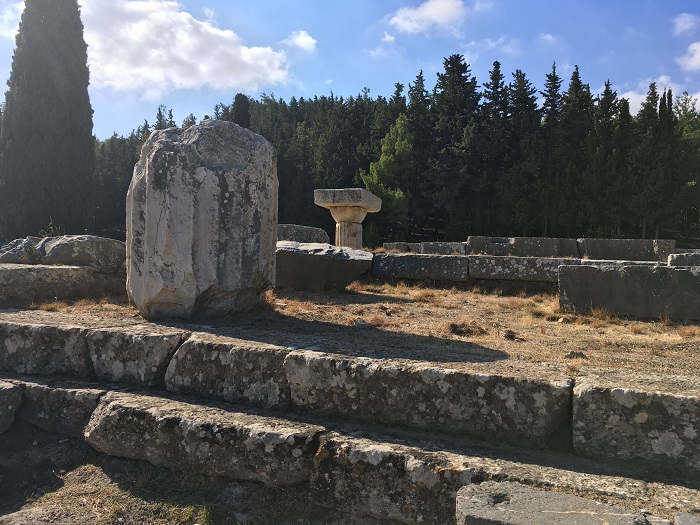

Here are interpretations of the temple as it existed, along with the mosaic of Asklepios and Hippocrates that we saw at the museum in last week’s blog post. The smoke in the illustration is from burnt offerings on the altar in the middle terrace.
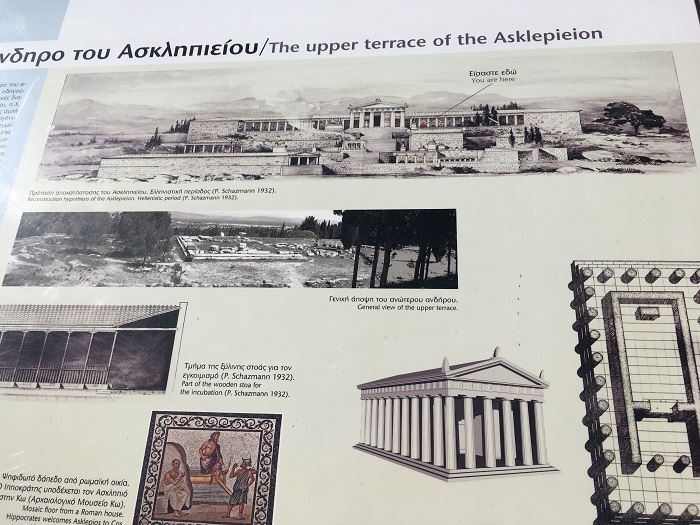
As Durrell notes in his musings on Kos, more important than the temple buildings is the serenity of place. I sat quietly for some time in the shade of the forest bordering the upper terrace, simply gazing out over the hillside and the sea, soaking in the atmosphere.
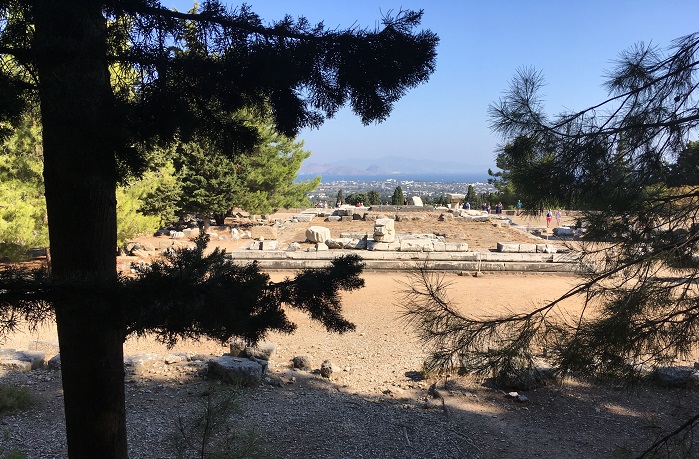
There are still lots of puzzle pieces of carved marble scattered around, waiting for possible later reassembly.
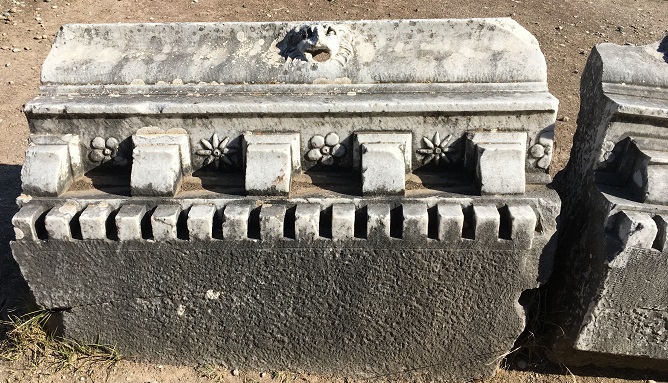
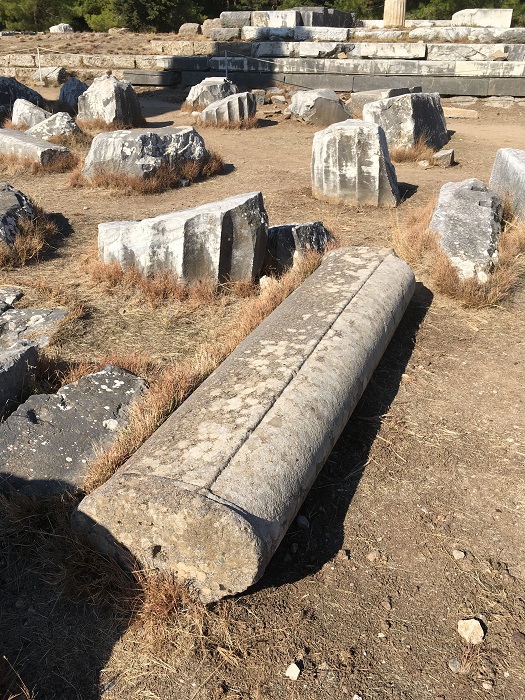
Thor is fascinated with the engineering of these buildings and walls, and noted the interesting triple layer of the long, arched wall:

More on Hippocrates, the “father of modern medicine.” He was born on Kos and went on to establish schools of medicine based on science of the time. He also established the Hippocratic Oath still taken by doctors today, essentially to “do no harm.”
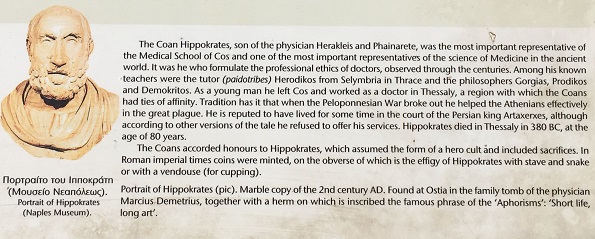
His statue in the Kos Museum:
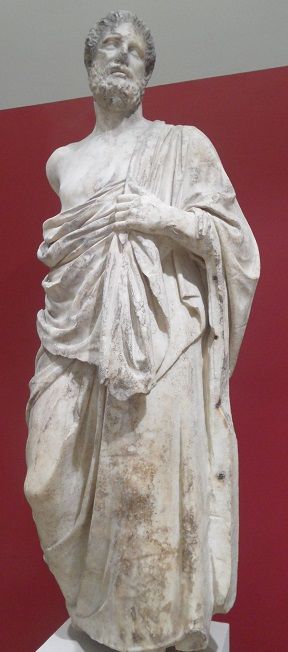
I described a couple weeks ago in a blog post our pilgrimage to the Plane Tree of Hippocrates in Kos Town, where Thor collected leaves for a scientific study of this venerable tree whose ancestor was supposedly planted by Hippocrates himself. At the Asklepion, I spotted this reproduction of an old drawing of the tree, when the island was under Turkish rule. (Unfortunately, there was no attribution or date.)
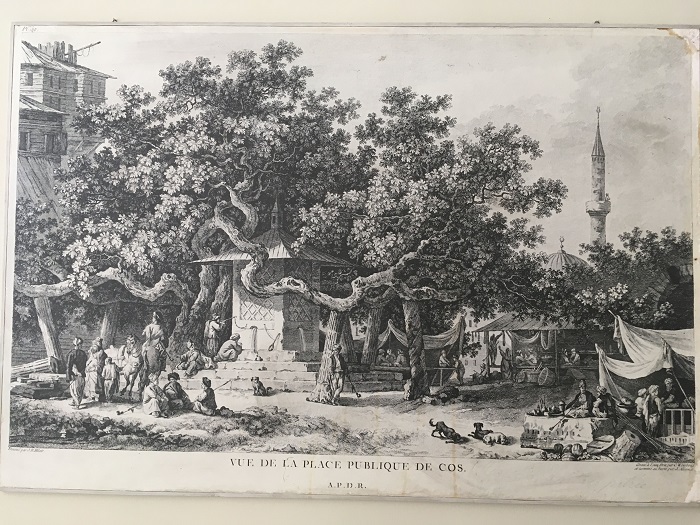
Wending our way downhill from the sanctuary, we paused at the Hippocrates Botanical Garden, where many of his healing plants are still grown.
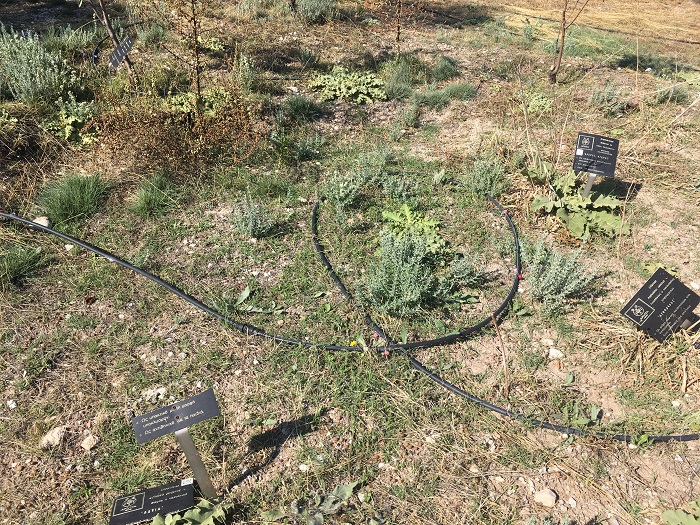
Next week: A wistful farewell to beautiful Kos, but only for a while. Thor and I have just decided that we must return this coming fall! “Carpe diem!”
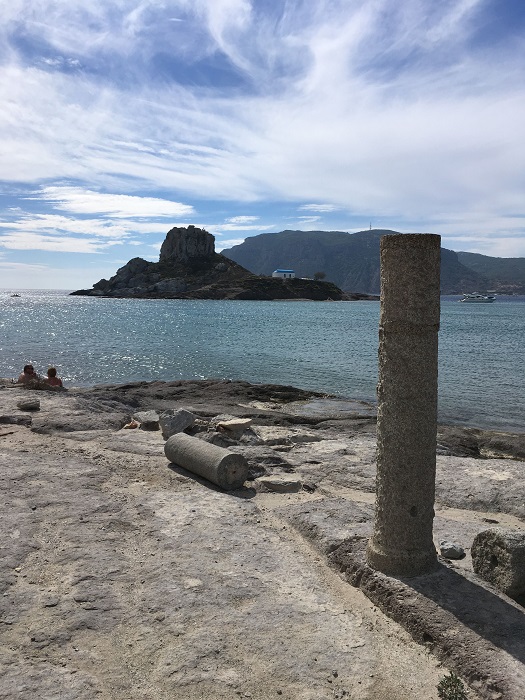
*****
You will find The Rambling Writer’s blog posts here every Saturday. Sara’s latest novel from Book View Cafe is available in print and ebook: The Ariadne Connection. It’s a near-future thriller set in the Greek islands. “Technology triggers a deadly new plague. Can a healer find the cure?” The novel has received the Chanticleer Global Thriller Grand Prize and the Cygnus Award for Speculative Fiction. Sara has recently returned from another research trip in Greece and is back at work on the sequel, The Ariadne Disconnect. Sign up for her quarterly email newsletter at www.sarastamey.com

The Asklepian staff is NOT a caduceus. A caduceus is a golden staff with wings and two snakes. The Asklepian staff is a simple wooden rod with a single snake. Only america gets that wrong.